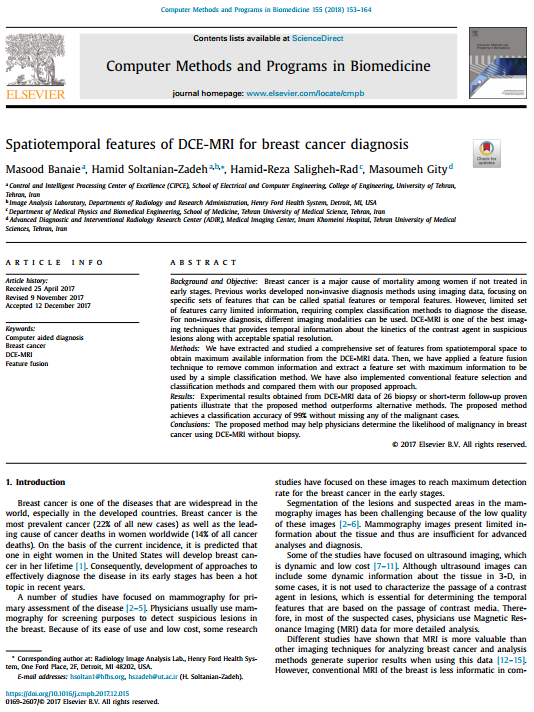Spatiotemporal features of DCE-MRI for breast cancer diagnosis
Abstract
Breast cancer is a major cause of mortality among women if not treated in early stages. Previous works developed non-invasive diagnosis methods using imaging data, focusing on specific sets of features that can be called spatial features or temporal features. However, limited set of features carry limited information, requiring complex classification methods to diagnose the disease. For non-invasive diagnosis, different imaging modalities can be used. DCE-MRI is one of the best imaging techniques that provides temporal information about the kinetics of the contrast agent in suspicious lesions along with acceptable spatial resolution.
Materials and Methods: We have extracted and studied a comprehensive set of features from spatiotemporal space to obtain maximum available information from the DCE-MRI data. Then, we have applied a feature fusion technique to remove common information and extract a feature set with maximum information to be used by a simple classification method. We have also implemented conventional feature selection and classification methods and compared them with our proposed approach.
Results: Experimental results obtained from DCE-MRI data of 26 biopsy or short-term follow-up proven patients illustrate that the proposed method outperforms alternative methods. The proposed method achieves a classification accuracy of 99% without missing any of the malignant cases.
Conclusions: The proposed method may help physicians determine the likelihood of malignancy in breast cancer using DCE-MRI without biopsy.

